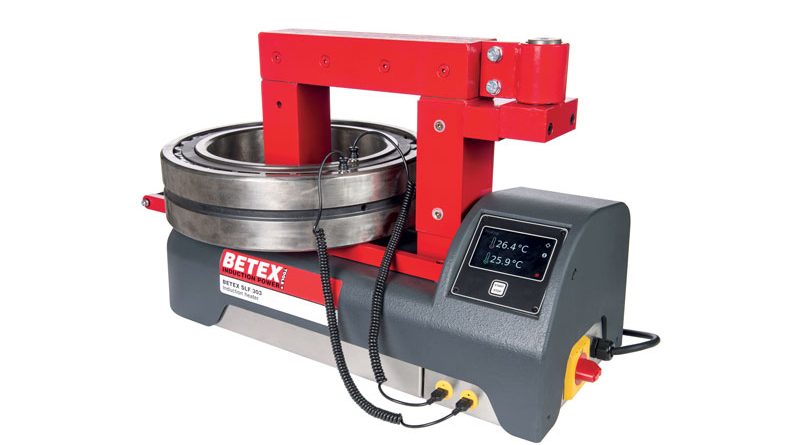Induction Heating: the Best Choice for Bearing Mounting
Among the various bearing mounting techniques, hot mounting with induction heating is the method preferred by most bearing manufacturers. Betex induction heaters from Bega Special Tools offer a number of advantages: in addition to improved mounting quality, cost and cycle time savings; longer service intervals and safer working conditions offered by an environmentally friendly process, in line with Industry 4.0 concepts.
by Carol Poelma
Bearings fail for many different reasons. One such reason is improper mounting. If the right techniques and tools are not used, bearing life is jeopardized. It is estimated that approximately 30 percent of bearing failure is caused by poor fitting: a serious percentage to consider.
There are many bearing types which require different fitting techniques. For instance, hydraulic mounting, cold-mounting or hot-mounting (interference fitting using heat), the technique explained in this article.
There are several bearing hot mounting techniques
A bearing or other part is heated prior to mounting, causing the inner ring to expand. Then the bearing is mounted on the shaft. As it cools down it shrinks and tightens around the shaft.
Methods used for heating can be ovens, oil baths, hot plates, or even open flames with blow torches. The risks are many: local overheating causes material stress, loss of original lubrication, dirt contamination, not to mention the risk of personal injury due to slippery bearings (oil), or open flames. Oil baths and open flames also cause air pollution in the workspace.
Bearing manufacturers recommend induction heating as the optimum heating method. The reasons are obvious. Modern heaters offer many advantages, including time or temperature control. They are energy efficient, reduce heating times, and they also improve safety and working conditions on site. The clean, environmentally friendly work processes are all good reasons to switch from traditional heating methods to induction heating.
A stress-free and safe heating technique
The new generation of Betex induction heaters have even more to offer. The low and medium frequency induction heaters of the Smart series enable full control over the heating process. Specially designed for industrial use, the heaters have an easy to use touchscreen with many heating options. More importantly: they are fitted with a Delta-T control system. Two temperature sensors measure the inside and the outside temperature of the bearing or other part and adjust the heating according to the selected variable settings. In this way, the maximum permitted temperature difference between two points can never be exceeded. Heating is even and uniform, and material stress is avoided. Heaters have a USB port for logging purposes. Nowadays it is becoming more and more important to be able to store heating data or create a proof of work report.
Bearings should never be heated above 120°C (248°F) unless specified otherwise. Extreme heat can affect metallurgical structure and lubrication. Betex induction heaters offer full control including Delta T. When this option is used, the temperature difference between the inner and outer ring can never exceed the maximum pre-set value.
Medium frequency induction heaters for mounting and dismounting
These heaters solve difficult assembly or disassembly jobs for medium-sized and large bearings. Compared to traditional methods, the heaters are easy to use. Fast when necessary for disassembly, or controlled and slower for stress-free assembly of valuable bearings. Fixed or flexible inductors can be used depending on the application. Fixed inductors are used for serial work. Flexible inductors are multifunctional and are used for large bearings or irregularly shaped parts, with all the advantages of a safe, stress-free, damage-free, clean and energy efficient heating process.
For special applications it is even possible to carry out tests in advance or to use simulation programs.
What to consider when selecting an induction heater
The customer may have particular requirements including a cylindrical or progressive expansion, automatic demagnetization, microprocessor-controlled heating, automatic power adjustment, logging of the heating process. Knowing the size and type of the bearing is of paramount importance.
The size of the heater is determined by the smallest inner diameter and the largest outer diameter. Then the heating frequency has to be defined. Does customer require speed, or a controlled heating process using Delta-T? Both mounting and dismounting requirements are required?
Reducing maintenance costs is a priority
Significant cost savings can be achieved with induction heater technology. Sometimes savings are enormous: heating times are reduced dramatically; parts are reused that would otherwise be scrapped; a production plant reduced overhaul time from ten to eight days.
But when it comes to bearing mounting, perhaps the most important advantage is the improved quality of the assembly process.

